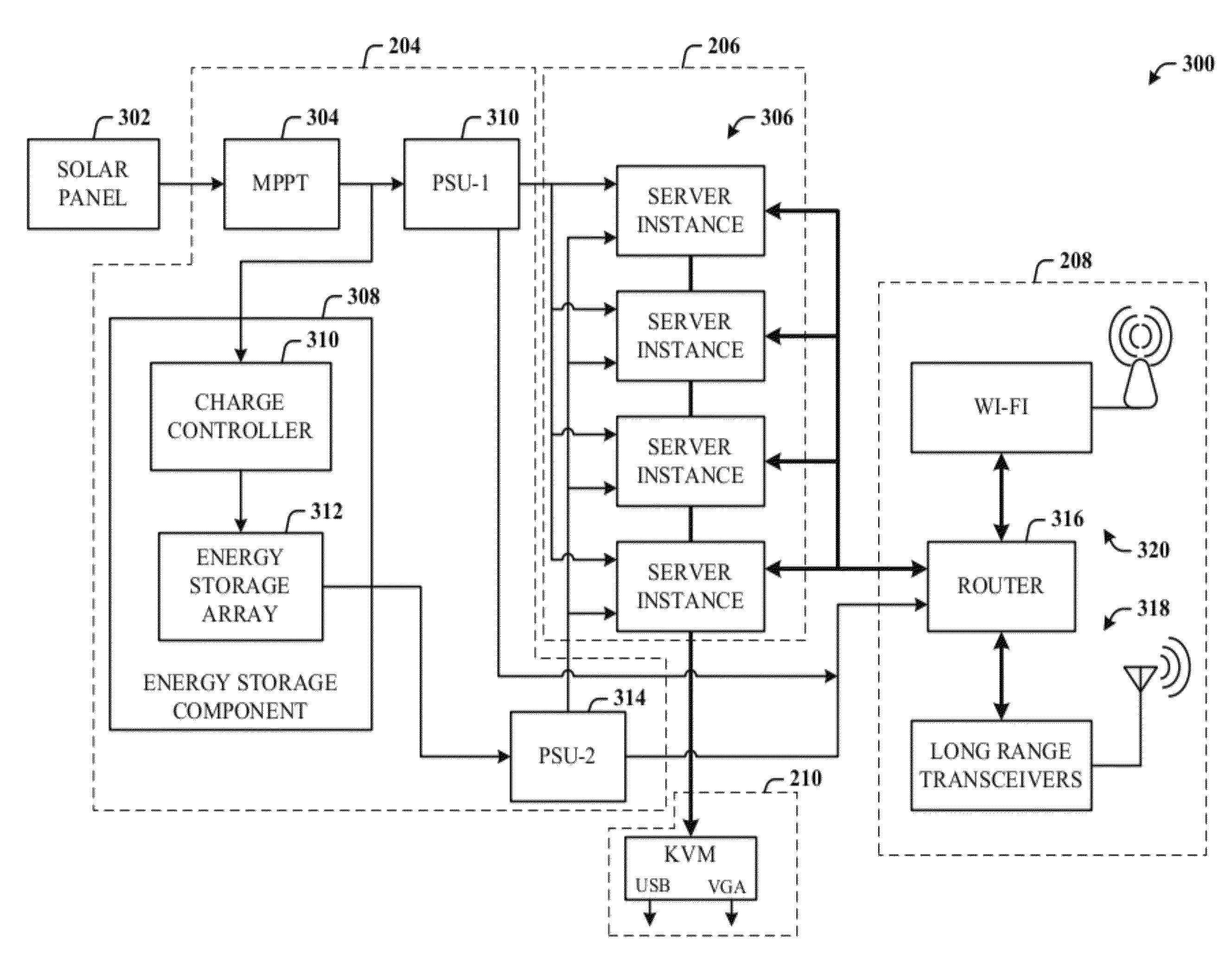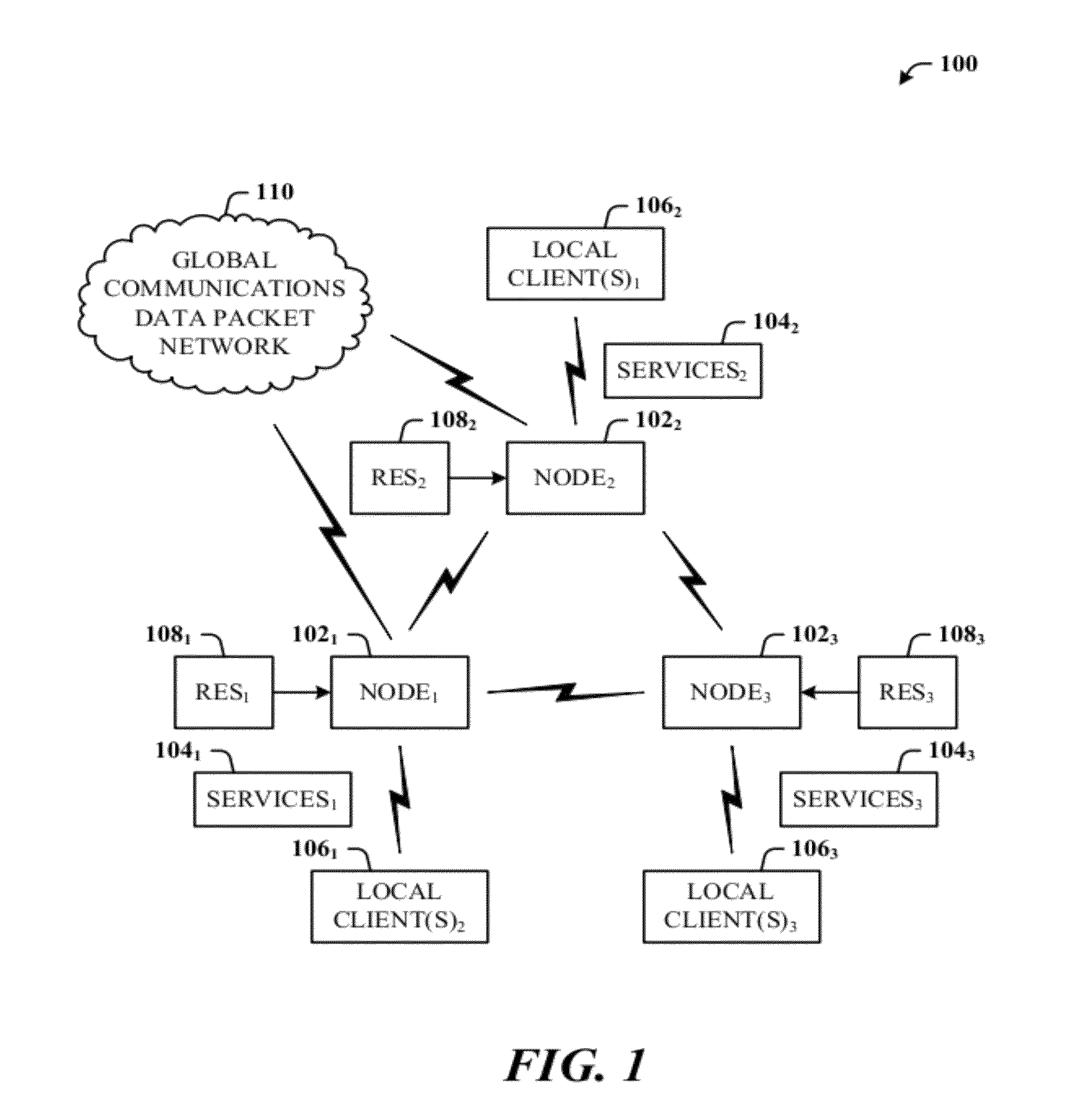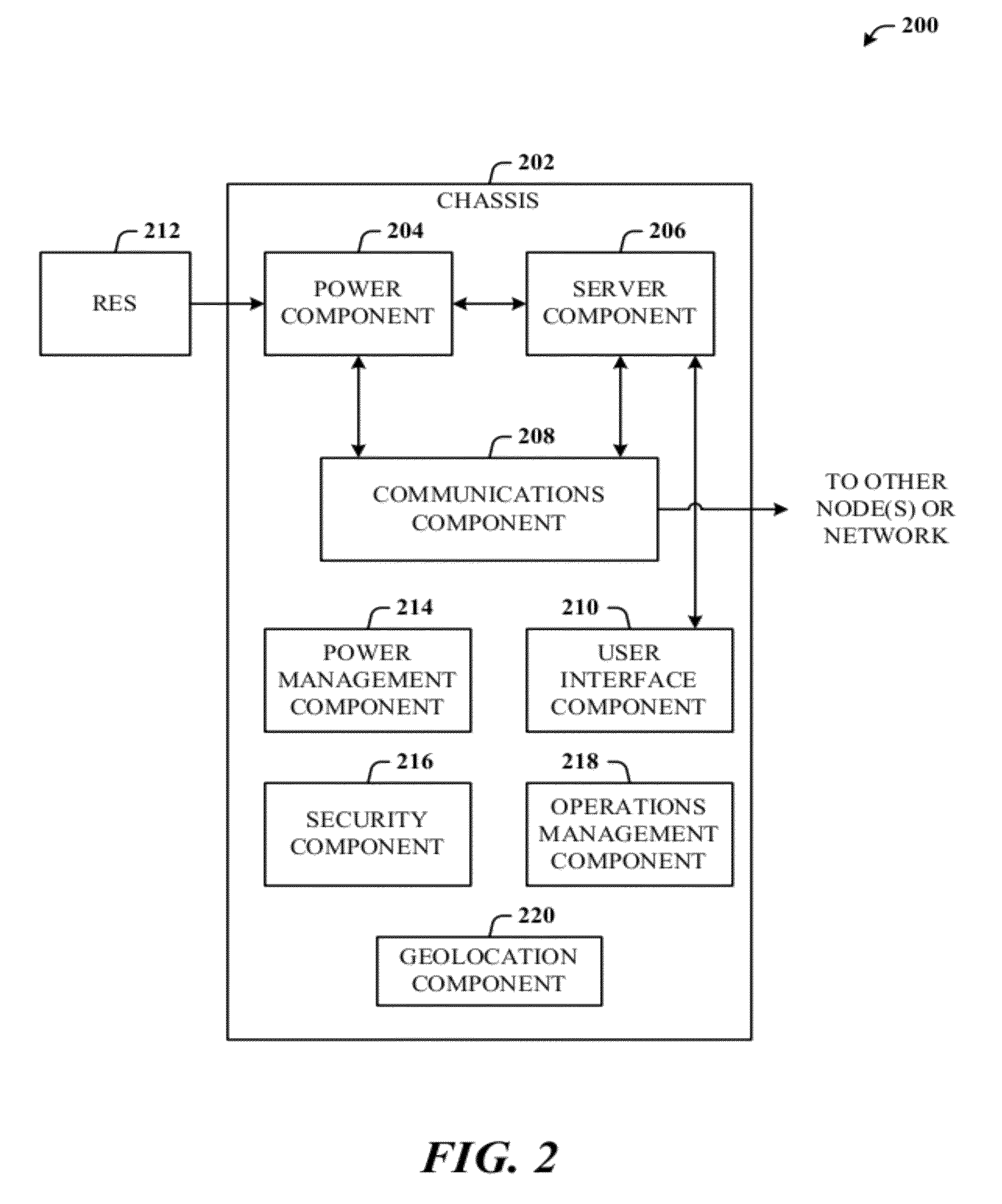Wireless cloud-based computing for rural and developing areas
a cloud-based computing and rural technology, applied in the field of rural and developing areas, can solve the problems of little or no interest in providing data services, limited cloud computing capabilities, and low cost, and achieve the effect of facilitating effective operation at low power levels and low cos
- Summary
- Abstract
- Description
- Claims
- Application Information
AI Technical Summary
Benefits of technology
Problems solved by technology
Method used
Image
Examples
Embodiment Construction
[0014]An ever-increasing number of desktops, mobile devices, services and applications nowadays rely on the processing power and storage capabilities offered by datacenters to provide an enhanced experience to users. In the recent past, there have been only few proposals to harness the power of grid computing from mobile devices, all of which do not cover the concept of a “local cloud”: computing services that are totally run locally by the pico-DC nodes and can fully operate autonomously in an off-grid fashion, both power-wise and Internet connection-wise.
[0015]The disclosed architecture is a cloud computing fabric for rural and developing countries where communication and service are severely limited or nonexistent. The fabric can include one or more datacenter (DC) nodes (referred to as pico-DCs) each of which provides stable, predictable, and reliable services to connected clients in the absence of stable and reliable power and Internet connectivity.
[0016]Each node is a portable...
PUM
 Login to View More
Login to View More Abstract
Description
Claims
Application Information
 Login to View More
Login to View More - R&D
- Intellectual Property
- Life Sciences
- Materials
- Tech Scout
- Unparalleled Data Quality
- Higher Quality Content
- 60% Fewer Hallucinations
Browse by: Latest US Patents, China's latest patents, Technical Efficacy Thesaurus, Application Domain, Technology Topic, Popular Technical Reports.
© 2025 PatSnap. All rights reserved.Legal|Privacy policy|Modern Slavery Act Transparency Statement|Sitemap|About US| Contact US: help@patsnap.com



